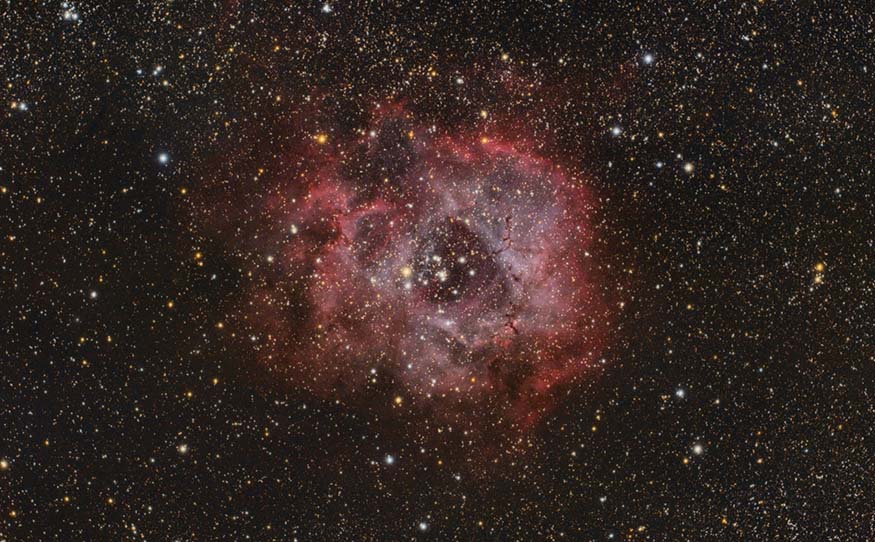
BEAUTY:  BRAGGING RIGHTS: A beautiful sight
BRAGGING RIGHTS: A beautiful sight
HOW EASY IS IT TO SEE? Best with a rich-field telescope
BEST TIME TO SEE IT: Winter (in Monoceros)
TYPE: Diffuse Nebula and Open Cluster
DISCOVERED: 1784 by William Herschel
Cluster and nebula. The Orion Nebula is young: its stars are still enclosed in their birth cocoon. The Pleiades are older: they’ve already drifted far away from their birthplace. But the Rosette Nebula is in between—its bright stars shine gloriously against the glow of their “nursery” nebula. To find it, start at Hubble’s Variable Nebula and then follow the line from 13 to 8 Monocerotis. You’ll see the cluster about 2 degrees left of 8 Monocerotis. Once you’ve found the cluster, patiently try to detect the nebula with averted vision. When looking at the nebula, you will see patches and tendrils; these are the brightest parts of the nebula. Try using a nebula filter for a better look; such filters block light pollution but preserve views of the nebula.